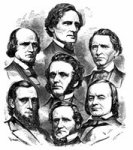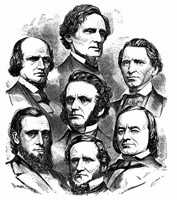
Worksheets and No Prep Teaching Resources
Reading Comprehension Worksheets
A Nation Divided
(1840-1861)

A Nation Divided
(1840-1861)
 Worksheets and No Prep Teaching Resources Reading Comprehension Worksheets A Nation Divided (1840-1861) |
 A Nation Divided (1840-1861) |
| edHelper's suggested reading level: | grades 5 to 6 | |
| Flesch-Kincaid grade level: | 6.88 |
|
Nullification and Secession
By Mary L. Bushong |

|
 1 Is it possible for two events that seem to have nothing in common to be linked in splitting apart a country? Though they seem unlike on the surface, the issues under them are the same-states' rights.
1 Is it possible for two events that seem to have nothing in common to be linked in splitting apart a country? Though they seem unlike on the surface, the issues under them are the same-states' rights. |
Create Weekly Reading Books
Prepare for an entire week at once! |
| Leave your feedback on Nullification and Secession (use this link if you found an error in the story) |
 |
A Nation Divided (1840-1861) |
 |
United States
|
|
|
 | Fifty States Theme Unit |
 |
Document Based Activities |